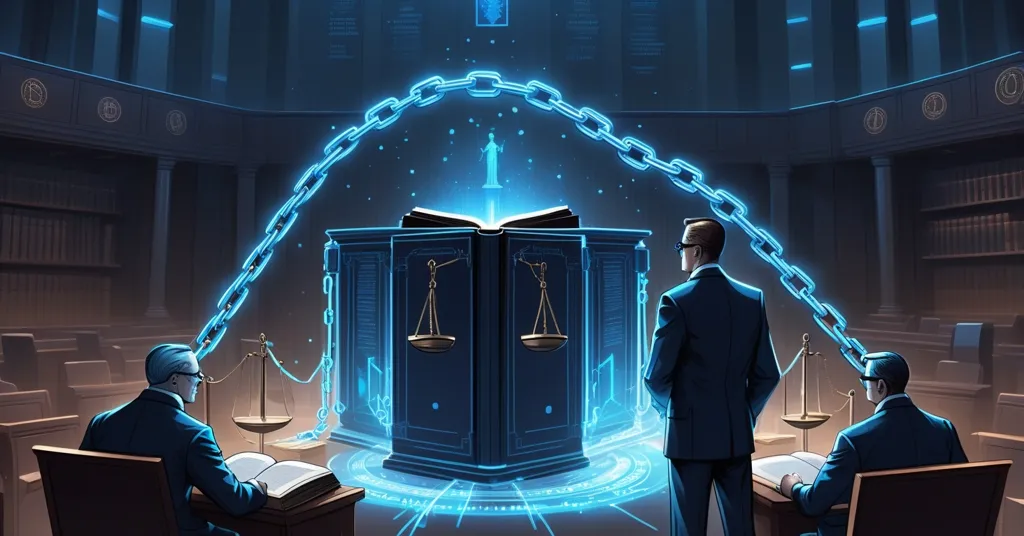Kraken Challenges SEC: Tokenized Trading Under U.S. Securities Law Fire

Kraken Takes on the SEC: Tokenized Trading Faces U.S. Securities Law Scrutiny
Kraken, a heavyweight in the cryptocurrency exchange world, has stepped into a critical arena with the U.S. Securities and Exchange Commission (SEC) to debate the future of tokenized trading. Their meeting on August 25, 2025, with the SEC’s Crypto Task Force could be a game-changer for blockchain-based markets—or a stark reminder that laws from the 1930s are woefully out of touch with digital innovation.
- Key Event: Kraken met with the SEC on August 25, 2025, to discuss tokenized trading systems and compliance with U.S. securities laws.
- Market Scale: Over $26 billion in real-world assets (RWAs) are tokenized, including $7 billion in U.S. Treasuries, per RWA.xyz data.
- Core Challenge: Can outdated regulations handle blockchain’s promise of instant settlements and fractional ownership, or will they suffocate progress?
Tokenization Unpacked: What It Means for Crypto
For those new to the space or needing a refresher, tokenized trading is about transforming ownership of real-world assets—stocks, bonds, real estate, or U.S. Treasury bills—into digital tokens on a blockchain. Think of it as slicing a high-end artwork into tiny, buyable pieces; you don’t need to be a millionaire to own a fraction. These tokens are managed by smart contracts, bits of code on blockchains like Ethereum or Solana that automatically execute trades or payments without banks or brokers meddling. The potential is staggering: slashing settlement times from days to minutes, gutting costs by bypassing middlemen, and opening markets to anyone with a smartphone. But the catch? The rules governing this tech are stuck in the era of paper ledgers and rotary phones.
The meeting between Kraken—joined by reps from Payward, Inc., Kraken Securities, and legal counsel from WilmerHale—and the SEC wasn’t a casual chat. It was a deep dive into whether tokenized systems can mesh with U.S. securities laws like the Securities Exchange Act of 1934, a framework built for centralized, pre-digital finance. Blockchain operates on distributed ledgers with no single overseer, creating a fundamental clash with regulations expecting clear custodians and defined exchanges. This isn’t just a technical debate; it’s about whether the financial future gets unshackled or choked by red tape, as highlighted in discussions on how U.S. securities laws impact digital assets.
The Stakes Are Real: Tokenization’s Massive Footprint
This is no fringe idea. Data from RWA.xyz shows over $26 billion in real-world assets are already tokenized across various blockchains, with a hefty $7 billion in U.S. Treasury tokens leading the charge. Projects like Apollo Diversified Credit Securitize ($110.67M) and Spiko US T-Bills Money Market Fund ($110.62M) span Ethereum, Solana, Polygon, and beyond, proving this is a mainstream movement. Traditional finance giants aren’t sitting on the sidelines either. Franklin Templeton operates a blockchain-based money market fund, BlackRock runs its private tokenized liquidity fund BUIDL, and JPMorgan is testing tokenized deposits with institutional clients. Even retail platforms like Robinhood offer tokenized stocks in Europe, while Coinbase awaits SEC approval to enter the fray. The message is clear: tokenized assets are reshaping finance, and the U.S. better keep up or get left behind.
Kraken’s Blueprint: Efficiency Meets Regulatory Reality
Why is Kraken pushing this conversation now? Their tokenized trading system isn’t just a thought experiment—it targets glaring inefficiencies in traditional markets. Since May 2024, the U.S. has run on a T+1 settlement cycle, meaning trades finalize in one day rather than two. That’s progress, but blockchain could push it to T+0, settling trades in minutes. According to the Depository Trust and Clearing Corporation (DTCC), T+1 already cut clearing fund requirements by 23–29%, saving $3–3.7 billion. Now picture T+0: how much more capital could be freed up overnight? That’s not just a speed boost; it’s a complete overhaul of capital efficiency. Then there’s fractional ownership, letting everyday investors buy slivers of high-value assets, aligning perfectly with the crypto ethos of tearing down financial barriers, a point underscored by Kraken’s ongoing talks with the SEC.
Yet, the SEC isn’t exactly waving a green flag. Their Crypto Task Force, formed in January 2025, issued custody guidance for tokenized securities in May 2025, but it’s a drop in the bucket. Fundamental questions loom large. Does a blockchain platform count as an “exchange” under Regulation ATS, which governs non-traditional trading venues? How do custody rules like Rule 15c3-3—designed to protect customer assets held by brokers—apply when tokens sit on-chain in digital wallets or smart contracts with no central entity? Can smart contracts replace legally mandated transfer agents who track ownership? These aren’t minor hiccups; they’re existential for tokenized markets. Kraken’s own history with the SEC adds context—a 2023 lawsuit for operating as an unregistered exchange was dismissed with prejudice in March 2025. This meeting signals a shift from legal slugfests to dialogue, but don’t expect a buddy movie. The SEC’s past with crypto, from hammering Ripple over XRP to ongoing battles with Coinbase, shows a default stance of suspicion over support, as detailed in reports about the Kraken-SEC tokenized asset discussions in 2025.
Custody Chaos and Smart Contract Pitfalls
Digging deeper, custody is a regulatory minefield. In traditional systems, brokers safeguard client assets under strict rules to prevent loss or theft. On a blockchain, tokens often reside in digital wallets or are managed by smart contracts—code that’s only as secure as its creator. What happens if a smart contract is hacked, like the DeFi disasters of yesteryear that bled millions? Who’s on the hook if a tokenized asset disappears? Beyond tech risks, legal gray areas abound. If a smart contract glitches on a dividend payout or trade execution, who legally owns the asset? These aren’t just “what ifs”—they’re open invitations for scammers if regulators don’t step up. The SEC’s May 2025 custody guidance scratches the surface, but it’s far from a roadmap, leaving firms like Kraken navigating a fog of compliance risks while trying to protect investor confidence, a challenge explored in the SEC Crypto Task Force updates.
Global Disparities: U.S. Falling Behind in the Blockchain Race
Looking beyond U.S. borders, the regulatory landscape gets messier. While the SEC dabbles in informal guidance and enforcement, jurisdictions like the European Union, Singapore, and Hong Kong are writing clear playbooks for tokenized securities. The EU’s MiCA framework classifies crypto-assets and outlines compliance, while Singapore’s Monetary Authority pilots tokenized bond trading. This uneven terrain fuels a dangerous risk: regulatory arbitrage. Companies could ditch the U.S. for laxer regions, skirting oversight while leaving investors vulnerable to fraud or loss. The World Federation of Exchanges (WFE) has raised the red flag, cautioning that tokenized products could “undermine market integrity” without protections like voting rights or transparent disclosures, a concern echoed in analyses of regulatory challenges for tokenized real-world assets.
“The meeting showed the SEC is now looking closely at the legal framework for tokenized trading systems in the U.S.,” said Nate Geraci, President of ETF Store.
Geraci’s take reflects a flicker of industry hope, but the WFE’s warning is a reality check. Decentralization doesn’t mean anarchy—without solid rules, retail investors could get burned. If the U.S. keeps lagging, we risk ceding control to other regions, an ironic twist for a technology meant to scatter power, not centralize it elsewhere.
Bitcoin’s Role: Not the Star, But Still in the Story
As someone leaning toward Bitcoin maximalism, I’ll be blunt: Bitcoin isn’t the lead actor in this tokenization drama. Its blockchain is a bulletproof fortress for decentralized money, not a playground for complex real-world asset tokenization. Platforms like Ethereum, with its robust smart contract ecosystem, and Solana, with high-speed transactions, are better engineered for this. Take MakerDAO on Ethereum, backing stablecoins with RWAs through projects like Centrifuge, or Solana’s rapid tokenization experiments—these fill a gap Bitcoin doesn’t need to. That’s not a slight on BTC; it’s just not its fight. Its strength lies in being the hardest money ever, a store of value that doesn’t bend. Could sidechains like Stacks or the Liquid Network, or even the Lightning Network for micro-transactions, bring Bitcoin into the tokenization fold someday? Sure, it’s possible. But right now, altcoins and layer-2 solutions are driving this bus, and that diversity only bolsters the wider crypto revolution, a sentiment shared in community discussions on Kraken’s SEC meeting regarding tokenized trading.
Still, tokenized trading resonates with Bitcoin’s mission—disrupting bloated, gatekeeper-heavy systems and empowering the little guy. If the SEC can get its head out of the past, this tech could supercharge capital formation, letting startups and underserved communities raise funds without groveling to Wall Street. That’s effective accelerationism (e/acc) at its finest: hit the gas on innovation, but don’t wreck the ride. The dark side? Custody disputes, smart contract failures, or regulatory overkill could derail it all. A major hack or a scammer exploiting legal loopholes could poison public trust in tokenization faster than you can say “rug pull.” And with the SEC’s Crypto Task Force splitting focus between tokenization, liquid staking, and who knows what else—even under a potentially crypto-sympathetic Commissioner like Hester M. Peirce—real clarity might take years. In crypto, that’s a lifetime.
Where Do We Go From Here?
Kraken’s move isn’t just a middle finger to the tired “crypto vs. regulators” saga—it’s a bid to steer the ship. They’re not dodging accountability; they’re shaping the rules. But the path forward is brutal. For every shiny promise of instant settlements or democratized access, there’s a shadow of legal gaps or heavy-handed policy waiting to strike. We’re cheering for blockchain to demolish the status quo, but only if it’s done with precision—no sloppy regulations, no safe harbors for fraudsters. The SEC needs to wake up quick, or global competitors will eat their lunch. Might we see a tokenized trading pilot by 2026? Perhaps some interim guidance to test the waters? Kraken’s gamble could redraw the financial map—but only if regulators don’t fumble the ball, as explored in deeper insights on the Kraken-SEC meeting details from August 25, 2025.
Key Questions and Takeaways on Tokenized Trading and Crypto’s Future
- What is tokenized trading, and why should crypto fans care?
Tokenized trading turns real-world assets like stocks or Treasuries into digital tokens on a blockchain, enabling fractional ownership and near-instant trades. It’s a big deal for crypto because it mirrors the push to cut out middlemen, lower costs, and democratize finance. - How do U.S. securities laws clash with blockchain tokenization?
Laws from the 1930s, like the Securities Exchange Act of 1934, are built for centralized systems, not distributed ledgers or smart contracts. This creates confusion over whether blockchain platforms are “exchanges” or how custody rules apply, stunting innovation. - What’s the payoff for investors if tokenized assets take off?
Investors could see trades settle in minutes (T+0), costs drop by skipping intermediaries, and access to pricey assets through fractional shares. It’s a potential win for retail traders and capital access in overlooked markets. - Why is global regulatory inconsistency a problem for blockchain securities?
With the EU, Singapore, and Hong Kong setting clear rules while the U.S. stumbles, firms might flock to laxer regions, risking uneven investor protections. This regulatory arbitrage could split markets and damage trust in tokenized tech. - Is Kraken’s SEC dialogue a turning point for crypto regulation?
It’s a hopeful shift from lawsuits to cooperation, especially post-Kraken’s 2023 SEC case dismissal. But with the SEC’s sluggish pace and divided attention, don’t expect fast answers—clarity on tokenized trading could drag on for years. - Where does Bitcoin fit in the tokenized asset wave?
Bitcoin’s blockchain isn’t ideal for complex RWAs, leaving Ethereum and Solana to lead with advanced smart contracts. BTC shines as decentralized money, but future sidechains or Lightning Network upgrades might open tokenization doors—ecosystem diversity is crypto’s strength.



